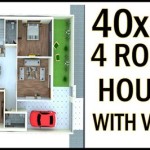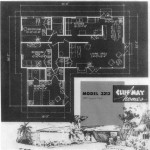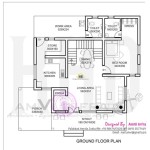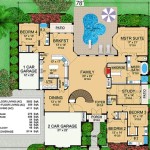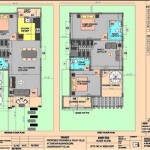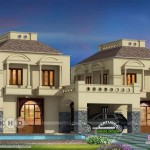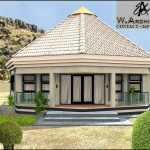Carriage House Garage Floor Plans: Design and Functional Considerations
Carriage house garage floor plans represent a blend of historical architectural aesthetics and contemporary functionality. These garage designs, inspired by the detached structures once used to house horse-drawn carriages, offer unique opportunities for homeowners seeking to enhance their property's character and practical utility. Careful planning and consideration of specific needs are paramount when developing carriage house garage floor plans.
The appeal of carriage house garages extends beyond their visual charm. They provide versatile spaces that can serve purposes ranging from vehicle storage to workshops, studios, and even living areas. Successfully integrating these features necessitates a thorough understanding of the available space, structural requirements, and desired usage patterns.
Key Point 1: Defining Functional Requirements and Space Allocation
Before embarking on the design process, it is essential to clearly define the intended function of the carriage house garage. Will it primarily serve as storage for vehicles, or will it incorporate additional uses such as a workshop, home office, or accessory dwelling unit (ADU)? The answer to this question directly influences the layout, size, and features of the floor plan.
If vehicle storage is the primary function, the dimensions of the garage door(s) and the number of vehicles to be accommodated must be carefully considered. Standard garage door widths typically range from 8 to 10 feet for single-car garages and 16 to 20 feet for double-car garages. The depth of the garage should be sufficient to comfortably accommodate the length of the vehicles, with additional space for walking around and accessing stored items. A minimum depth of 20 feet is generally recommended, but larger vehicles may require greater depth.
Incorporating additional functional areas necessitates a more complex space allocation strategy. A workshop, for example, requires designated areas for workbenches, tools, and storage. A home office needs a quiet and well-lit space with adequate electrical outlets for computers and other equipment. An ADU, on the other hand, demands a complete living space with a separate entrance, kitchen, bathroom, and sleeping area. This will impact the layout on both the ground floor and any subsequent floors above the garage itself.
Furthermore, the placement of doors and windows is crucial for both functionality and aesthetics. Doors should be positioned to provide easy access to the main house, driveway, and any outdoor areas. Windows should be strategically placed to maximize natural light and ventilation while maintaining privacy. The orientation of the garage on the property can also affect the amount of sunlight it receives throughout the day, which can impact heating and cooling costs.
Consideration should also be given to the placement of utilities, such as electrical panels, water heaters, and HVAC systems. These components require dedicated space and must be easily accessible for maintenance and repairs. Integrating these elements seamlessly into the overall design is essential for creating a functional and aesthetically pleasing space.
Key Point 2: Structural Design and Material Selection
The structural design of a carriage house garage is critical to its stability, durability, and aesthetic appeal. The foundation, walls, and roof must be designed to withstand the elements and support the weight of the structure. The choice of materials plays a significant role in both the structural integrity and the overall aesthetic of the garage.
The foundation is the bedrock of the entire structure. Common foundation types for carriage house garages include concrete slabs, crawl spaces, and full basements. Concrete slabs are the most economical option, providing a solid and level base for the garage. Crawl spaces offer access to utilities and can help protect the structure from moisture damage. Full basements provide additional storage or living space but are more expensive to construct.
The walls of the garage can be constructed from a variety of materials, including wood framing, concrete blocks, and brick. Wood framing is a popular choice due to its versatility, affordability, and ease of construction. Concrete blocks are more durable and fire-resistant but require more specialized skills to install. Brick provides a traditional and aesthetically pleasing look but is more expensive than wood framing or concrete blocks. The choice of exterior siding, such as wood siding, vinyl siding, or stucco, further contributes to the overall aesthetic.
The roof structure must be designed to withstand wind loads, snow loads, and other environmental factors. Common roof styles for carriage house garages include gable roofs, hip roofs, and gambrel roofs. Gable roofs are simple and economical to construct, while hip roofs provide more stability and wind resistance. Gambrel roofs, characterized by their two slopes on each side, are often used to create additional headroom in the upper level of the garage.
Material selection should also consider the local climate and building codes. In areas with high winds or heavy snowfall, it is essential to use durable materials that can withstand these conditions. Building codes may also dictate specific requirements for fire resistance, insulation, and ventilation. Consulting with a structural engineer and local building officials is crucial for ensuring that the design meets all applicable codes and standards.
Carriage house garage doors are a defining feature of the design. They are typically designed to mimic the appearance of traditional carriage house doors, with swing-out or bi-fold designs. However, modern overhead doors with decorative hardware can also be used to achieve a similar aesthetic. The choice of door material, such as wood, steel, or fiberglass, affects the durability, maintenance requirements, and overall aesthetic of the garage.
Key Point 3: Integrating Aesthetics and Architectural Harmony
A key aspect of carriage house garage design is ensuring that the structure complements the architectural style of the main house and the surrounding landscape. The garage should not only be functional but also visually appealing and harmonious with its environment. This involves careful consideration of the garage's size, shape, materials, and detailing.
The size of the garage should be proportional to the size of the main house and the overall property. A garage that is too large can overpower the main house and detract from its aesthetic appeal. Conversely, a garage that is too small may not provide adequate storage or workspace. A good rule of thumb is to maintain a similar scale and proportion between the garage and the main house.
The shape of the garage should also complement the architectural style of the main house. A house with a traditional style may benefit from a garage with a gable roof and traditional carriage house doors. A house with a more modern style may be better suited to a garage with a flat roof and minimalist detailing. The roof pitch, window styles, and siding materials should all be coordinated to create a cohesive and harmonious look.
The materials used in the construction of the garage should also be consistent with those used in the construction of the main house. Using similar siding materials, roofing materials, and trim details can help to create a sense of unity between the two structures. The color palette should also be carefully considered. Choosing colors that complement the existing color scheme of the main house can help to integrate the garage seamlessly into the overall landscape.
Architectural detailing can also play a significant role in enhancing the aesthetic appeal of a carriage house garage. Decorative hardware, such as hinges, handles, and latches, can add a touch of authenticity and charm. Window boxes, flower pots, and other landscaping elements can soften the appearance of the garage and create a more inviting atmosphere. Adding architectural features like cupolas, dormers, or decorative trim can further enhance the visual interest of the structure and tie it more closely to the architectural style of the main house.
Proper landscaping can also contribute to the overall aesthetic harmony of the property. Planting trees, shrubs, and flowers around the garage can help to soften its edges and integrate it into the surrounding landscape. A well-designed driveway and walkway can also enhance the curb appeal of the property and create a welcoming entrance to the garage.
Lighting plays a vital role in enhancing the aesthetic appeal of a carriage house garage, particularly at night. Exterior lighting fixtures can highlight architectural details, illuminate walkways, and create a sense of security. Interior lighting can be used to create a warm and inviting atmosphere inside the garage, making it a more pleasant and functional space. Consider using a combination of ambient lighting, task lighting, and accent lighting to achieve the desired effect. Motion-sensor lights can also be used to conserve energy and provide additional security.
In conclusion, developing effective carriage house garage floor plans requires careful consideration of functional requirements, structural integrity, and aesthetic harmony. By thoughtfully addressing these key elements, homeowners can create a garage that not only provides practical storage and workspace but also enhances the beauty and value of their property. The design process should involve collaboration with architects, engineers, and contractors to ensure that the finished product meets all applicable codes and standards and fulfills the homeowner's specific needs and desires.

4 Car Carriage House Garage Plan 2152 1 48 X 24

Pin On Garage Ideas

Modern Carriage House Plan Millard Heights Plans Garage

Laneway House Floor Plans The Cooper

Beautiful Carriage House Plans Garage Apartment W Photos

Carriage House Style 4 Car Garage Plan 2402 1 50 X 28

Carriage House Three Car Log Garage Cowboy Homes

Laneway House Craftsman Two Bedroom With Garage

Modern Carriage House Plan Timber Valley Plans Architecture Design

2 Bed Carriage House Plan With 3 Car Garage 22145sl Architectural Designs Plans

